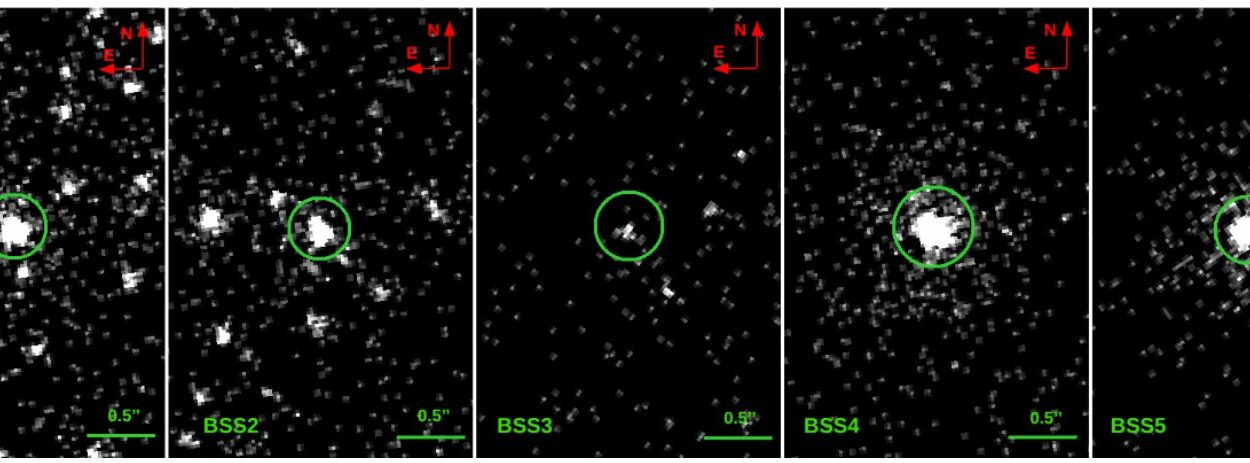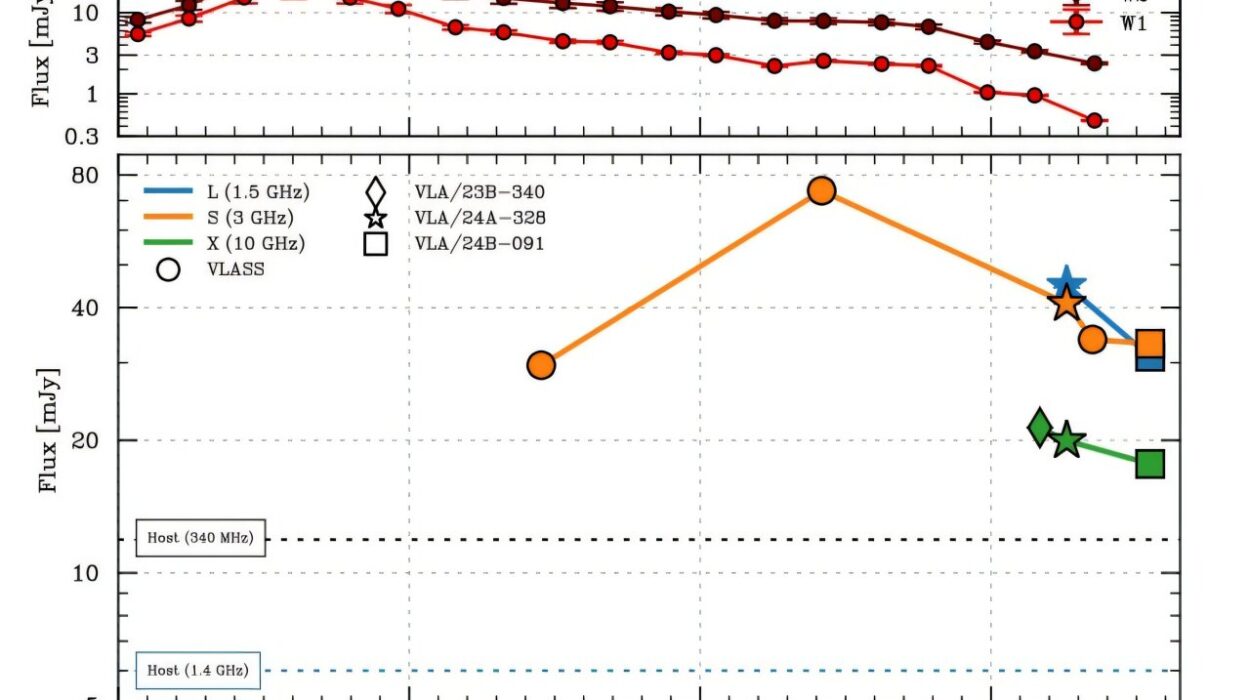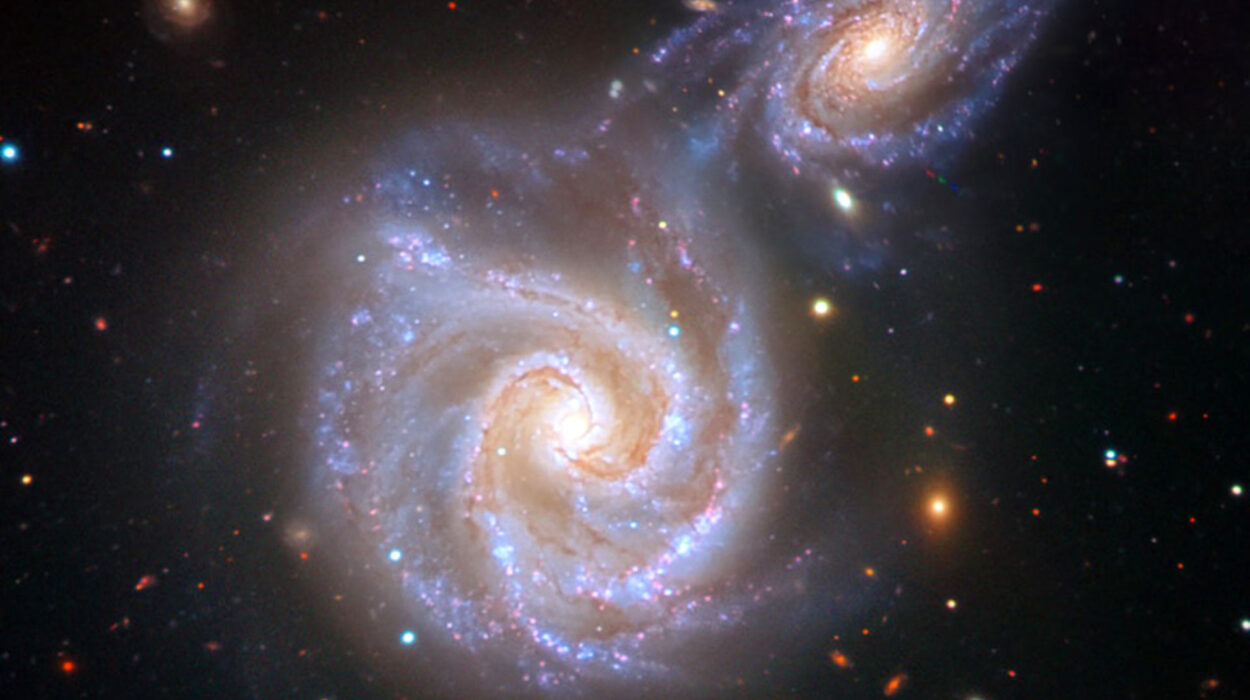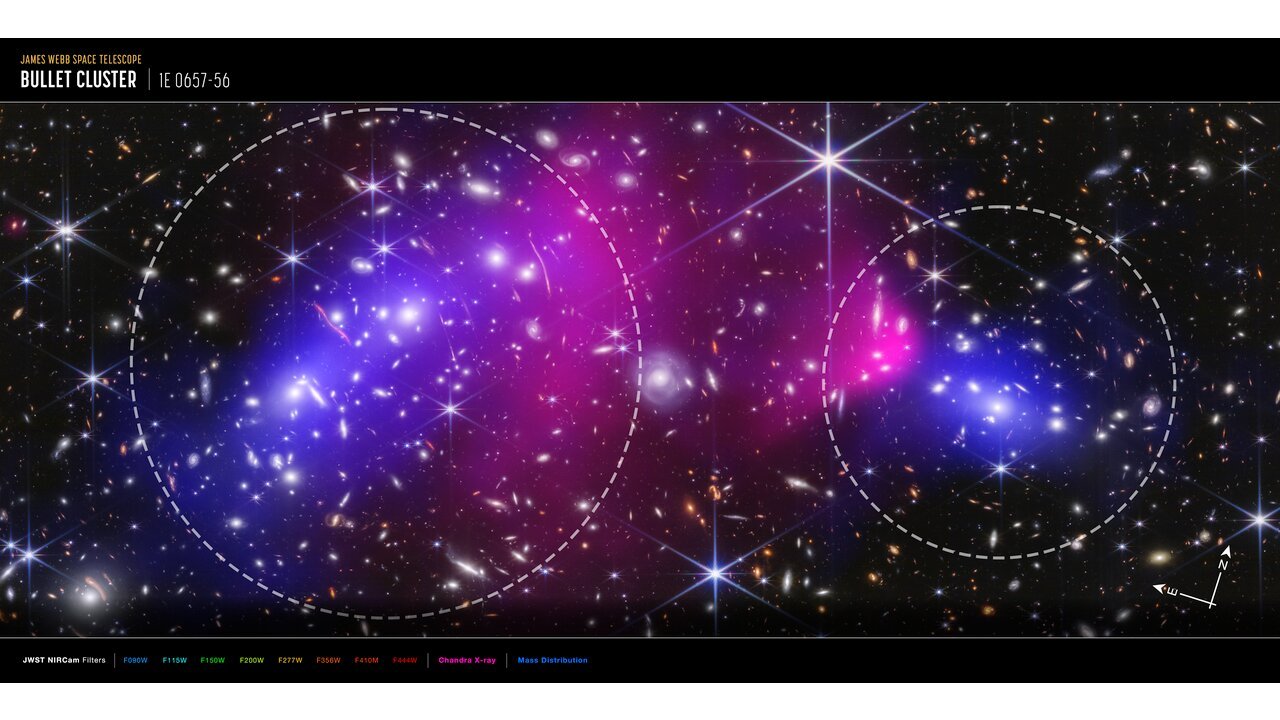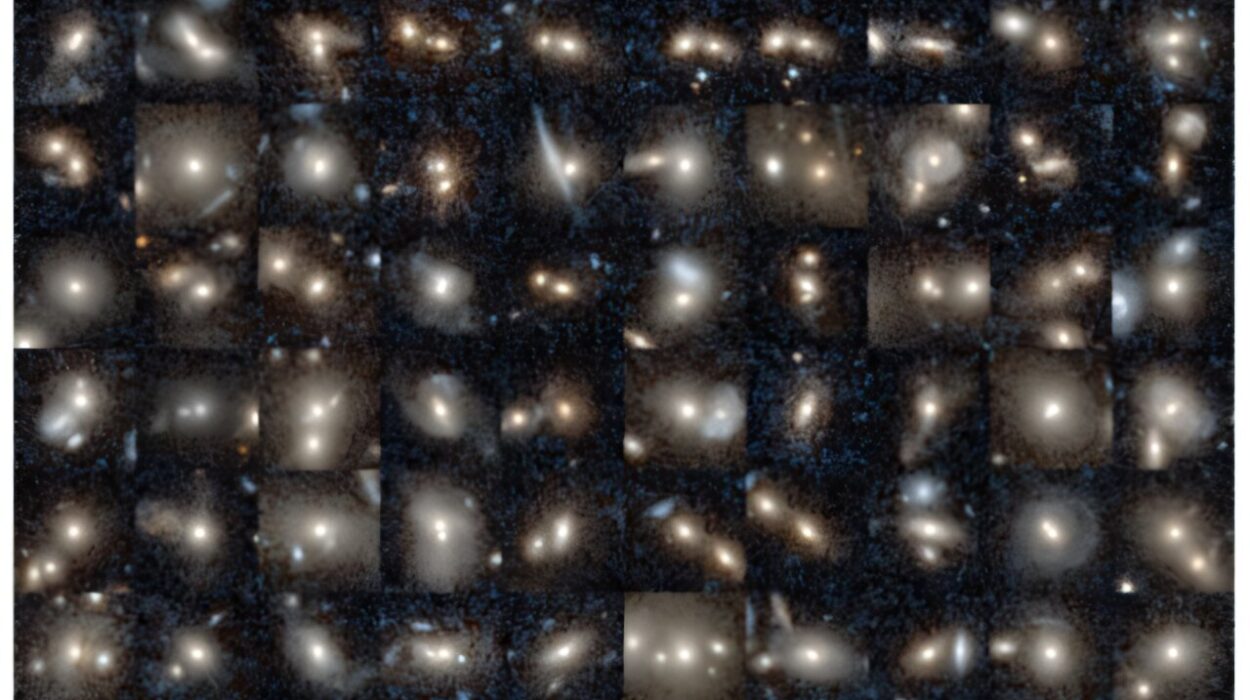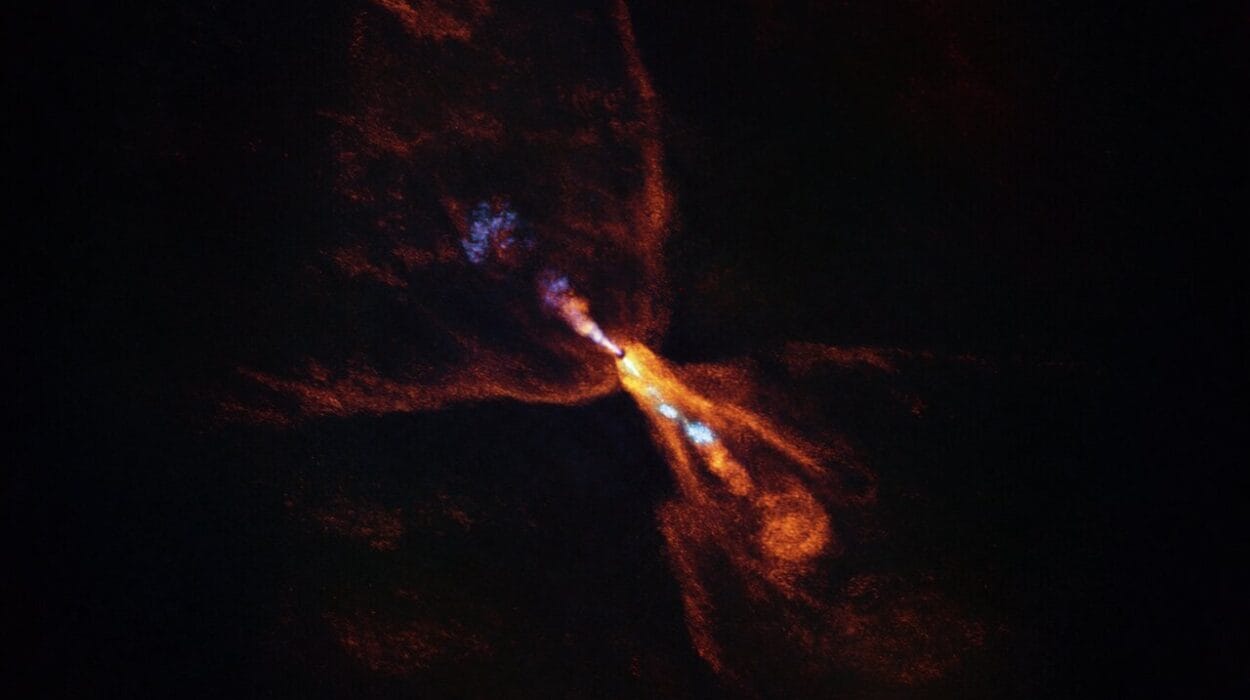Imagine you’re staring up at the night sky, under a blanket of stars. It’s a clear, crisp night, the Milky Way splashed across the heavens like a cosmic river. You feel small but connected, standing on a pale blue dot suspended in an endless void. Now, consider this: everything you can see, every star, planet, galaxy—every atom—makes up less than 5% of the entire universe.
The rest? It’s invisible. It doesn’t shine or reflect light. We can’t touch it. But it’s there. And without it, the universe as we know it wouldn’t exist.
Welcome to the strange, mind-bending realm of Dark Matter and Dark Energy—the twin mysteries that dominate the cosmos. Together, they make up 95% of everything, and yet we know almost nothing about them.
This is the story of humanity’s quest to understand the invisible universe.
The Missing Mass Problem—How Dark Matter Entered the Scene
The tale of dark matter begins almost a century ago, with a Swiss astronomer named Fritz Zwicky. In the 1930s, Zwicky was observing the Coma Cluster, a massive congregation of galaxies about 320 million light-years away. By measuring how fast these galaxies orbited the center of the cluster, Zwicky expected to calculate the cluster’s mass based on their motion.
But something was off. The galaxies were moving so fast that they should have flown apart like children flung off a carousel. And yet, they held together. There wasn’t nearly enough visible matter—stars, gas, dust—to account for the gravitational glue holding the cluster intact.
Zwicky concluded there had to be some kind of “dunkle Materie”—German for dark matter—providing the extra gravity. His peers were skeptical. Zwicky was known for being brash and, let’s just say, unorthodox. For decades, his discovery was dismissed as a curiosity, even an error.
But he was right.
Vera Rubin and the Spinning Galaxies
Fast forward to the 1970s. Enter Vera Rubin, an American astronomer whose meticulous studies of spiral galaxies confirmed what Zwicky suspected: something was amiss.
Rubin observed that stars far from the centers of galaxies were orbiting just as fast as those closer in. If galaxies were held together only by the visible mass at their centers, the stars on the outskirts should orbit more slowly, just like planets farther from the Sun. But they weren’t slowing down.
Rubin’s data showed that galaxies had flat rotation curves, meaning the outer stars moved just as fast as those near the center. This suggested an invisible mass enveloping each galaxy—a dark halo—providing the extra gravitational pull.
Rubin’s work was so precise, so undeniable, that the scientific community had to listen. Dark matter wasn’t an oddity; it was everywhere. And it was essential.
What Is Dark Matter? The Great Unknown
So what exactly is dark matter?
We know it’s not made of ordinary matter—protons, neutrons, and electrons. If it were, we’d be able to detect it in other ways. Dark matter doesn’t emit light or absorb it. It doesn’t interact with the electromagnetic force, which means it doesn’t glow, shine, or block our view.
But it does have gravity. Lots of it. Its presence bends light, warps space, and holds galaxies together. Without dark matter, galaxies would unravel, and cosmic structures as we know them wouldn’t exist.
The Leading Candidates for Dark Matter:
- WIMPs (Weakly Interacting Massive Particles): These are hypothetical particles that interact through gravity and possibly the weak nuclear force, but not electromagnetism. WIMPs were long considered the prime suspect in the dark matter mystery.
- Axions: Ultra-light particles theorized to exist by some extensions of the Standard Model of particle physics. Axions could form a sort of field that permeates the universe.
- MACHOs (Massive Astrophysical Compact Halo Objects): These are objects like black holes, neutron stars, or rogue planets that don’t emit light but still have mass. Early theories proposed they could account for dark matter, but evidence suggests they’re not nearly abundant enough.
Despite decades of searching, no dark matter particle has ever been directly detected. Enormous underground detectors in abandoned mines and cutting-edge particle accelerators are still hunting for them.
But dark matter’s gravitational effects are undeniable. It’s the invisible scaffolding on which galaxies and clusters of galaxies are built.
The Cosmic Web—Dark Matter’s Handiwork
Dark matter doesn’t just hold galaxies together. It’s responsible for the large-scale structure of the universe.
Imagine the universe as a vast cosmic web, with filaments stretching across billions of light-years. At the intersections of these filaments are galaxies and clusters, where dark matter is most concentrated. In the vast voids between them, both visible and dark matter are scarce.
Computer simulations of cosmic evolution show that dark matter’s gravity pulled ordinary matter into these filaments, leading to the formation of stars and galaxies. Without dark matter, the universe might be a bland, formless fog.
In a sense, dark matter is the architect of the universe.
The Expanding Universe—Enter Dark Energy
Just when astronomers thought they had the universe figured out, the 1990s delivered a cosmic curveball.
Two independent teams of astronomers, one led by Saul Perlmutter, the other by Brian Schmidt and Adam Riess, were studying distant Type Ia supernovae—exploding stars so bright they can be seen billions of light-years away. These supernovae act as standard candles, allowing astronomers to measure distances across the cosmos.
The goal was to determine how fast the expansion of the universe was slowing down. But to their astonishment, the teams found the opposite. The expansion wasn’t slowing—it was accelerating.
Something was pushing the universe apart, counteracting gravity on the largest scales. That something was dubbed dark energy.
What Is Dark Energy? A Cosmic Repulsion
If dark matter is the universe’s unseen glue, dark energy is its hidden engine, driving galaxies apart faster and faster.
Dark energy makes up about 68% of the universe’s total energy content. Unlike dark matter, it doesn’t clump or cluster. Instead, it seems to be a property of space itself—a mysterious pressure that accelerates the expansion of the universe.
The Leading Theories About Dark Energy:
- The Cosmological Constant (Λ): Proposed by Albert Einstein in 1917 as part of his theory of General Relativity. At the time, Einstein thought the universe was static, so he introduced a constant to balance gravity. Later, he called it his “biggest blunder” when the universe was found to be expanding. But now, Λ has returned as a simple explanation for dark energy.
- Quintessence: A dynamic field that changes over time and space. Unlike the cosmological constant, quintessence might evolve, offering more complex behavior that could explain variations in the acceleration.
- Modified Gravity: Some scientists wonder if we’re misunderstanding gravity itself. Perhaps our current theories break down on cosmic scales, and what we call dark energy is simply a sign that our model of gravity needs an upgrade.
Whatever it is, dark energy’s influence is profound. It determines the fate of the universe.
The Fate of the Universe—Dark Energy’s Endgame
The future of everything depends on dark energy.
If dark energy stays constant (as the cosmological constant suggests), the universe will continue expanding forever. Galaxies will drift apart until distant ones fade beyond the cosmic horizon. Stars will burn out, and black holes will slowly evaporate. In trillions upon trillions of years, the universe may end in a cold, dark heat death.
But if dark energy grows stronger over time, it could lead to a Big Rip—a scenario where galaxies, stars, planets, and eventually atoms themselves are torn apart by the accelerating expansion.
Alternatively, if dark energy weakens or reverses, gravity could one day pull everything back together in a Big Crunch, potentially followed by a new Big Bang.
At this point, we just don’t know.
The Tools We Use to Study the Invisible
Despite their invisibility, dark matter and dark energy leave fingerprints we can detect.
Gravitational Lensing:
Dark matter bends the path of light from distant galaxies. By measuring these distortions, we can map dark matter’s distribution—even where no visible matter exists.
Cosmic Microwave Background (CMB):
The afterglow of the Big Bang, the CMB contains tiny fluctuations that reveal the early universe’s structure. These fluctuations tell us about dark matter’s role in shaping cosmic history.
Galaxy Surveys:
Projects like the Sloan Digital Sky Survey and the Dark Energy Survey map millions of galaxies, measuring how their distribution changes over time. This helps us understand how dark energy accelerates the expansion.
Particle Detectors:
Experiments deep underground, like XENON1T in Italy, search for interactions between dark matter particles and ordinary matter.
Space Missions:
Telescopes like Euclid (launched in 2023) and NASA’s upcoming Nancy Grace Roman Space Telescope aim to unravel the mysteries of dark energy by observing the universe in unprecedented detail.
Speculation and Wonder—Are We Missing Something Bigger?
Some scientists wonder if dark matter and dark energy are clues to something even more profound—a deeper layer of reality we can barely imagine.
Could dark matter be made of particles from a hidden sector, an entire realm of physics disconnected from the Standard Model? Might dark energy hint at extra dimensions, as proposed in some versions of string theory?
Some radical theories suggest dark energy could be linked to the holographic principle, where the universe’s three-dimensional reality emerges from two-dimensional information encoded on a cosmic boundary.
Others ponder whether dark matter could be primordial black holes, formed in the earliest moments after the Big Bang.
We are explorers standing at the edge of understanding, peering into the darkness and asking, “What else is out there?”
Why Dark Matter and Dark Energy Matter to Us
At first glance, these mysteries might seem remote and abstract. Why should we care about invisible forces that shape galaxies billions of light-years away?
Because they tell us we don’t know everything. Not even close.
Dark matter and dark energy remind us that the universe is bigger, stranger, and more beautiful than we can comprehend. They drive us to keep asking questions, to keep exploring, to never be satisfied with easy answers.
They challenge our hubris and ignite our curiosity. And in doing so, they make us more human.
Conclusion: The Invisible Universe Beckons
We live in a universe where most of reality is invisible. The stars we see, the planets we inhabit, and even the atoms in our bodies are just the tip of a cosmic iceberg.
Dark matter holds galaxies together. Dark energy drives them apart. Together, they shape everything, and yet they remain elusive, like shadows at the edge of sight.
But we’re learning. Slowly, steadily, with each new discovery, we peel back another layer of the cosmic veil.
The invisible universe is calling.
Are you ready to answer?

